Exhibitions
Combination of physical and virtual exhibitions, permanent and touring exhibitions

-
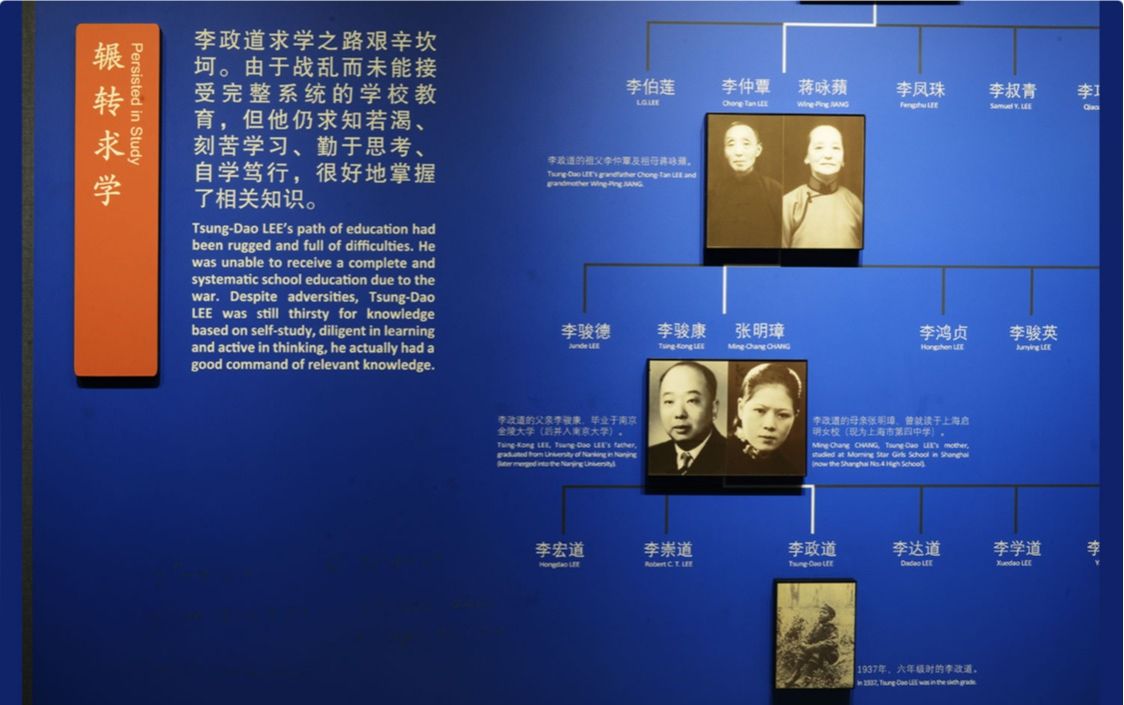
Persisted in Study
Because the War broke out, Tsung-Dao Lee was unable to finish his high school study and he fled to the rear area. After a long journey, Lee became poor and sick and had to enter Christian Unified High School of Ganxian in Jiangxi to recuperate while studying. Here, he completed most of the school courses by self-study and was arranged to teach lower grade math and physics courses.
-
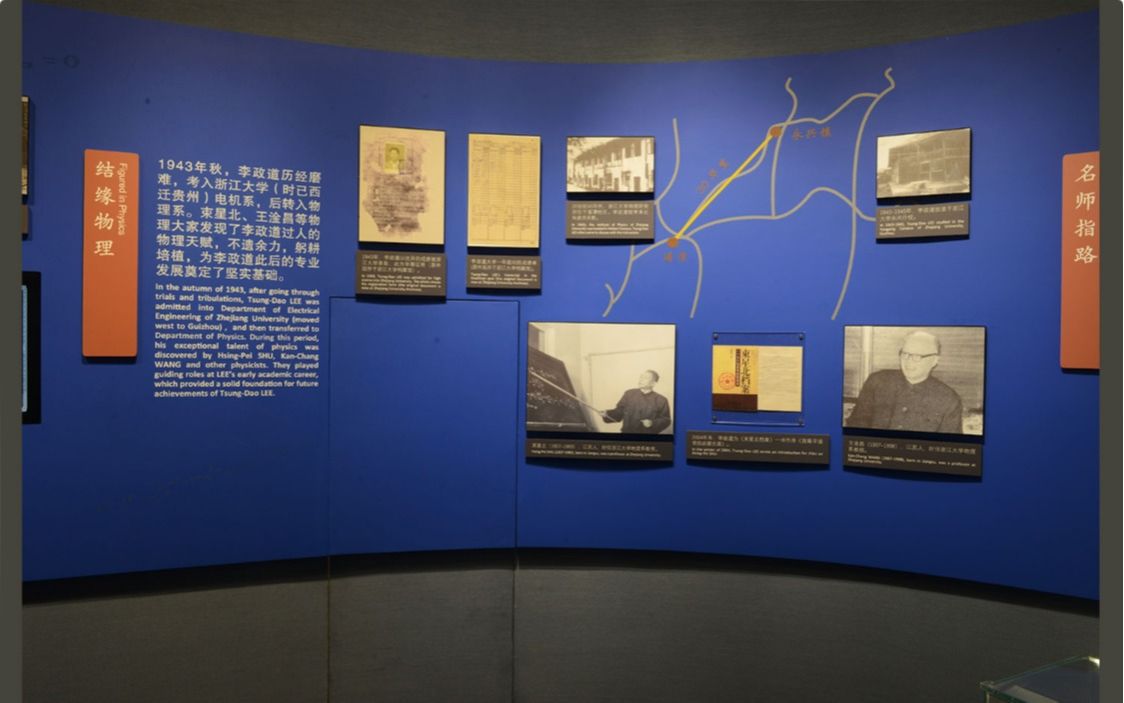
Figured in Physics
In the autumn of 1943, after going through trials and tribulations, Tsung-Dao Lee was admitted into the Department of Electrical Engineering of Zhejiang University. During the period in Meitan, his exceptional talent of physics was discovered by Hsing-Pei Shu, and Kan-Chang Wang. Under the influence of them, Tsung-Dao Lee transferred to the Department of Physics. They played guiding roles at Lee's early academic career, which provided a solid foundation for future achievements of Tsung-Dao Lee.
-

Inspired by Mentors
In 1945, Guizhou got involved in the war. In order to continue his studies, Tsung-Dao Lee transferred to the Southwest Associated University in Kunming. Here, Tsung-Dao Lee's diligence, studious and outstanding talent left a deep impression on the teachers. After the victory of the war, Tsung-Dao Lee was recommended to study in the United States by his teacher Ta-You Wu and Chi-Sun Yeh, Dean of School of Science at the National Southwest Associated University
-
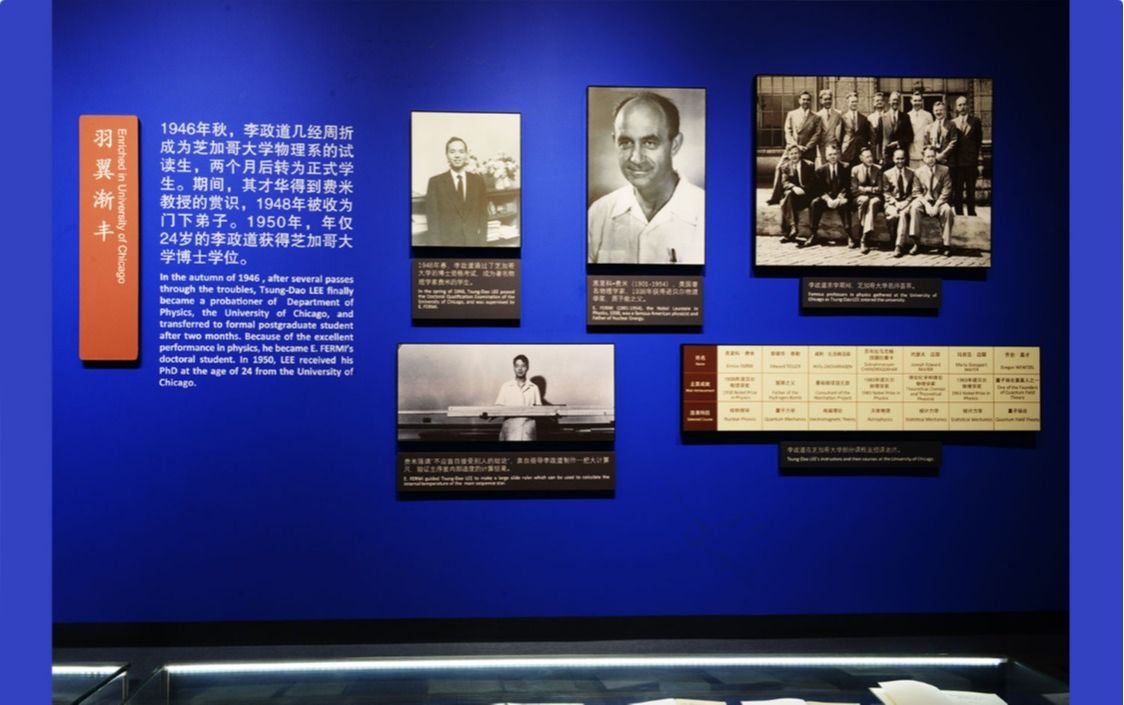
Enriched in University of Chicago
In 1948, Tsung-Dao Lee passed the Doctoral Qualifier Examination of the University of Chicago and was supervised by Enrico Fermi. Specialists in physics gathered at the University of Chicago at the time when Tsung-Dao Lee entered the university. With the guidance of great instructors, coupled with his diligence and extraordinary talents, Lee's path of physics research has been broadened, which has laid a solid foundation for the brilliant achievements.
-
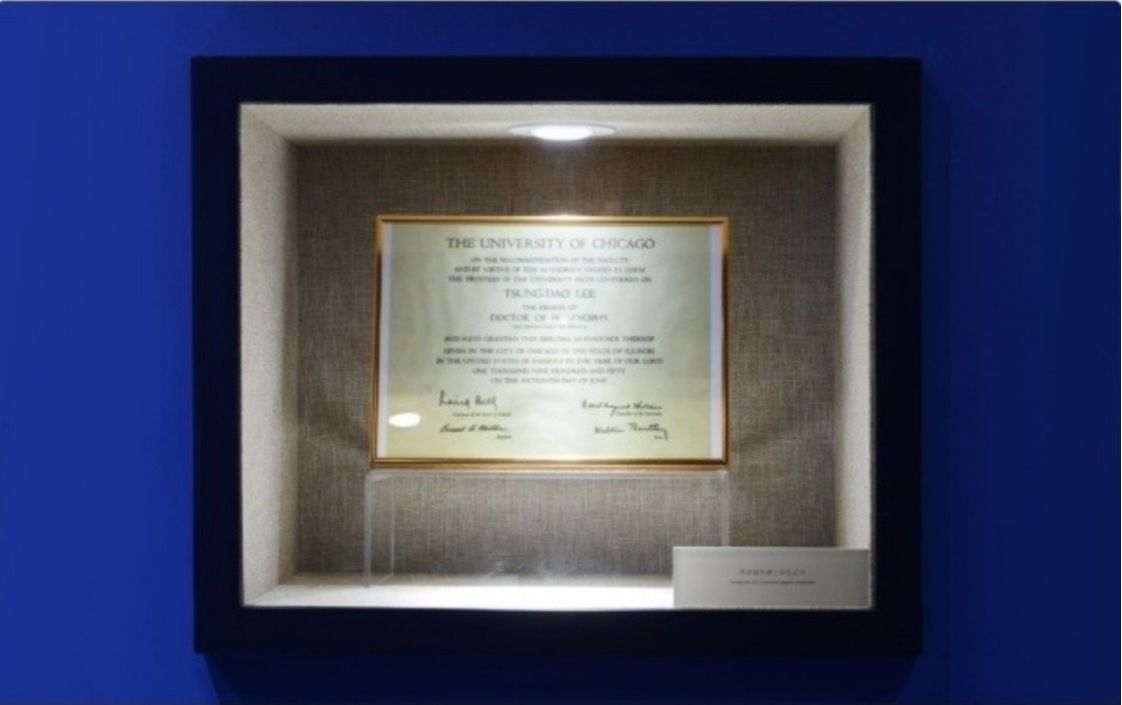
Doctoral Degree Certificate
In 1950, Tsung-Dao Lee received his doctorate with the thesis Hydrogen Content and Energy Productive Mechanism of white Dwarfs. The thesis was highly praised and won the President's Award of the University of Chicago. He was only 24 years old at that time and was hence given the moniker-"Prodigy Doctor". This is the only education certificate he received during the war period, which is very precious.
-
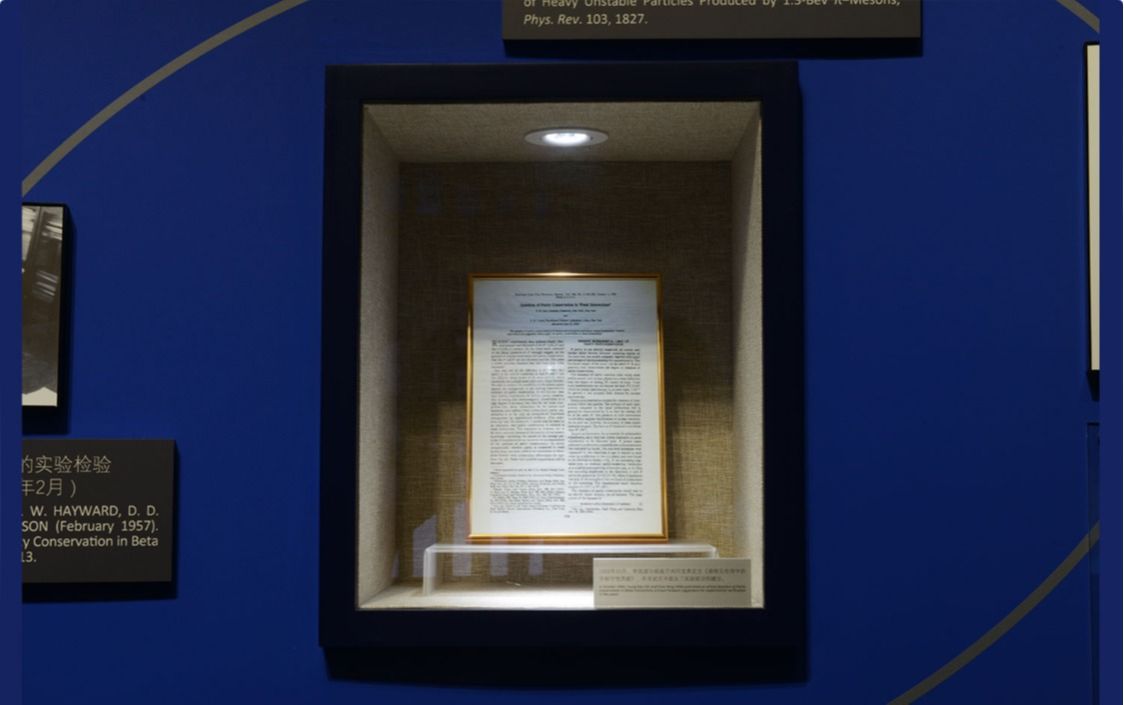
Violation of Parity Conservation
In 1955, Tsung-Dao Lee proposed a theory of cascade decay of θ and t particle without violating Parity Conservation in Speculation on Heavy Mesons, however, subsequent experiments proved that this decay mode did not exist. In October 1956, Tsung-Dao Lee and Chen-Ning Yang published an article Question of Parity Conservation in Weak Interactions, putting forward the possibility of Parity Non-Conservation in Weak Interactions. Until early 1957, four sets of experiments had confirmed the theory of Parity Non-conservation.
-

Telegram Notice
On October 31,1957, Royal Swedish Academy of Sciences informed Tsung-Dao Lee and Chen-Ning Yang by telegraph that they were awarded the Nobel Prize in Physics. This is the first time that a Chinese won this honor. Tsung-Dao Lee was only 31 years old when he won the prize and was the third youngest winner in the history of the Nobel Prize at that time. It took only one year from the publication of the paper to the notification of the award, and the speed fully demonstrated the shock of the theory of Parity Non-conservation to the physics community.
-

The Phantom Imaging "Glorious Moment"
The Phantom Imaging "Glorious Moment" restored the scene of the Nobel Prize award ceremony at that time, as well as Tsung-Dao Lee's acceptance speech at the celebration dinner, Tsung-Dao Lee once said, Research is not for awards, but research can be awarded. This encourages young scholars to devote themselves to scientific research.
-

Achievements in Physics
As an outstanding theoretical physicist, Tsung-Dao Lee has a wide range of research fields, including theory of elementary particles, quantum field theory, astrophysics, nuclear physics, hydrodynamics, statistical mechanics, condensed matter physics, etc. He has done many pioneering works and achieved milestones in these fields of physics. Here are some important academic papers of Tsung-Dao Lee. His physics life is just like the poem of the poet Du Fu-" Devoting to the investigation of the universe, retreating from the vanities of the world".
-

The Chronicle of Tsung-Dao Lee's Published Papers
Tsung-Dao Lee uses diligence to maximize his talents, and he has been exploring the frontier problems of physics. Here is a chronicle of Tsung-Dao Lee's published papers. According to statistics, from 1949 to 2011 when he retired, Tsung-Dao Lee published a total of 321 academic papers.
-
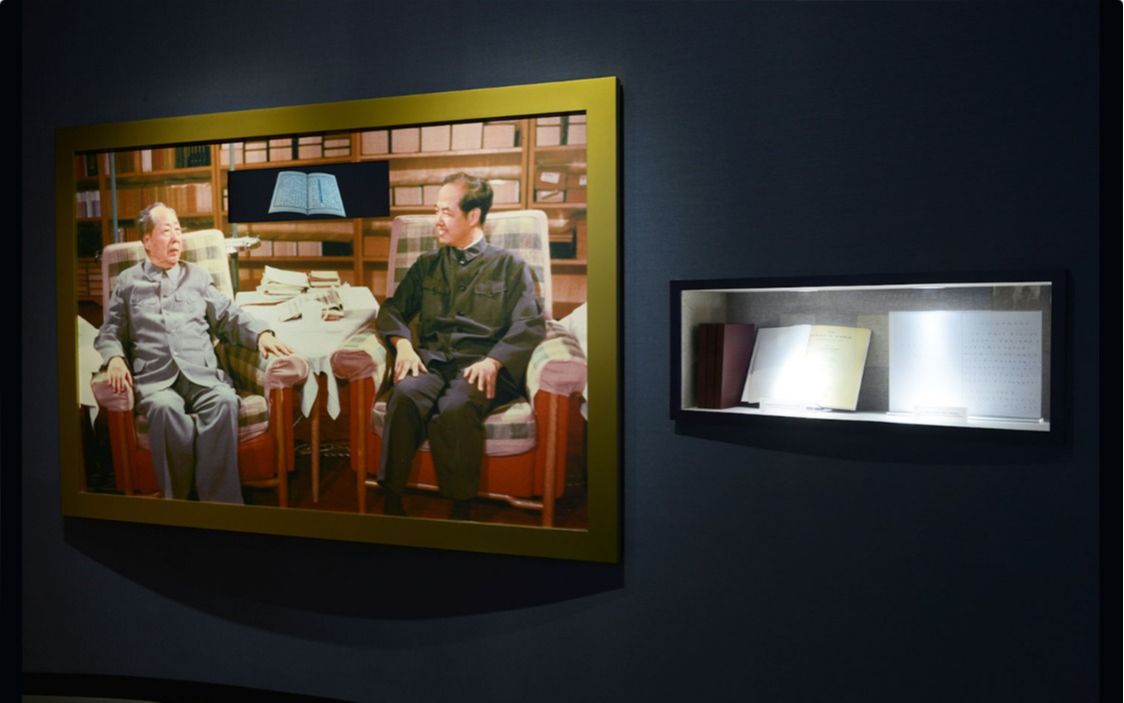
Explain Parity Non-conservation for Chairman Mao
On May 30, 1974, Chairman Mao received Tsung-Dao Lee at Zhongnanhai. Before the meeting, Chairman Mao had already read the manuscript of Abnormal Nuclear State by Tsung-Dao LEE. The image shows the scene of an intimate conversation between Tsung-Dao Lee and Chairman Mao. Tsung-Dao Lee used a pencil and a notebook to explain that in the physics field, symmetry and balance are not the same concepts. Chairman Mao was enthralled by the demonstration and in appreciation of Tsung-Dao Lee's suggestions on cultivating basic science talents. Chairman Mao also gave Lee a copy of the book "The Outline of Science", which was mentioned in their conversation.

















